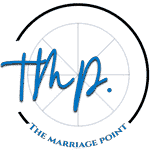Greetings! I wanted to share with you a few quotes from some of my favorite authors at the moment. I invite you to take a look at these books, and use them on your healing journey.
“The Body Keeps the Score” by Bessel van der Kolk
“How to Do the Work” by Dr. Nicole LePera
Matthew McKay, Thomas Marra, Jeffrey C. Wood & Jeffrey Brantley. “The Dialectical Behavior Therapy Skills Workbook.”
“As human beings we belong to an extremely resilient species.” Excerpt From: Bessel van der Kolk, M.D. “The Body Keeps the Score.”
Trauma informed therapists who help people navigate the healing of their traumatic past is meaningful and powerful and hard work. To anyone out there struggling, I see you, and I am here for you.
In ‘The Body Keeps the Score’ by Van Der Kolk, he shares the importance of movement as part of our healing journey, and how the body talks to us, saying, “Touch, the most elementary tool that we have to calm down, is proscribed from most therapeutic practices. Yet you can’t fully recover if you don’t feel safe in your skin. Therefore, I encourage all my patients to engage in some sort of bodywork.” Excerpt From: Bessel van der Kolk, M.D. “The Body Keeps the Score.”
In my work with clients, I’ve found it helpful to encourage movement as part of homework for the week, and to report back how they feel. Movement can be anything from karate, kickboxing, self-defense, yoga, dance, and more. I also encourage breath work, deep inhales and exhales for a count of five, and using meditation apps can be helpful as well.
“The emotions and physical sensations that were imprinted during the trauma are experienced not as memories but as disruptive physical reactions in the present. In order to regain control over yourself, you need to revisit the trauma.” Excerpt From: Bessel van der Kolk, M.D. “The Body Keeps the Score.”
Bessel goes on to talk about how trauma comes back in pieces, flashes, and the two sides of our mind; emotional and rational, can help us recover the event when they are both online. Emotion regulation; being able to acknowledge and label the emotion, apply self-soothing techniques and self-care practices, taking an ‘adult time out and making sure you’re not leaving damage in your emotional wake, are a few ways to manage emotions vs. being hijacked by them. Also, reality testing vs wishful thinking; knowing what’s real, finding the observer, the authentic self, not keeping secrets from yourself, and connecting with the loving parent or coach inside of you, and a therapist, helps you ground and connect to yourself in a safe way.
“In order to know who we are—to have an identity—we must know (or at least feel that we know) what is and what was “real.” We must observe what we see around us and label it correctly; we must also be able to trust our memories and be able to tell them apart from our imagination. Losing the ability to make these distinctions is one sign of what psychoanalyst William Niederland called “soul murder.” Erasing awareness and cultivating denial are often essential to survival, but the price is that you lose track of who you are, of what you are feeling, and of what and whom you can trust.” Excerpt From: Bessel van der Kolk, M.D. “The Body Keeps the Score.”
In therapy the road to healing includes trust and opening up in a safe space about what happened, what you are feeling, and who you can trust, establishing safety and healing in the present.
“Looking back now, I can see that a path was unfolding before me. My inner guide was showing me all that I needed to create a holistic model of healing.” Excerpt From: Dr. Nicole LePera. “How to Do the Work.”
Holistic methods, or as I affectionately use, the Wellness Model, includes evidence based therapeutic tools that help in not only managing the trauma response, but help clients create a new-found sense of self through self-love and self-care practices. It is helpful when clients establish a self-care practice, learn about optimism and gratitude, practice self-love in thoughts, words spoken, and action, and engage in pleasurable or leisure activities as part of their daily and weekly routine.
It can be helpful to have a self-soothing list ready for those emotionally high moments, however it is powerful to create a routine and rituals round self-care, so when you’re emotionally triggered, you’ve already built up resilience to stressors outside of your control.
Here are key steps to the Emotion Exposure exercise:
- Focus on your breathing.
- Notice how you feel inside your body.
- Notice and describe your emotion.
- Notice if the feeling is growing or diminishing; see it like a wave.
- Describe any new emotions or changes in quality.
- Notice any need to block the emotion, but keep watching.
- Notice impulses to act on your emotion, but keep watching without acting.
- Notice judgments (about self, others, or the emotion itself), and let them go.
- Keep watching until the emotion either changes or diminishes.
- Finish with a few minutes of mindful breathing.
Excerpt From: Matthew McKay, Thomas Marra, Jeffrey C. Wood & Jeffrey Brantley. “The Dialectical Behavior Therapy Skills Workbook.”
“The basic tenets of Holistic Psychology are as follows…Healing is a daily event. You can’t “go somewhere” to be healed; you must go inward to be healed. This means a daily commitment to doing the work. You are responsible for your healing and will be an active participant in that process. Your level of activity is directly connected to your level of healing. Small and consistent choices are the path to deep transformation.” Excerpt From: Dr. Nicole LePera. “How to Do the Work.”
To my readers, I hope to empower you and be your guide, please connect with me for a consultation, I am here for you, to help navigate the vast sea of knowledge and healing available to you. May you be well, you are worthy of peace, love, and happiness, and you are enough. Namaste.
Lauren Corsillo, LPC

